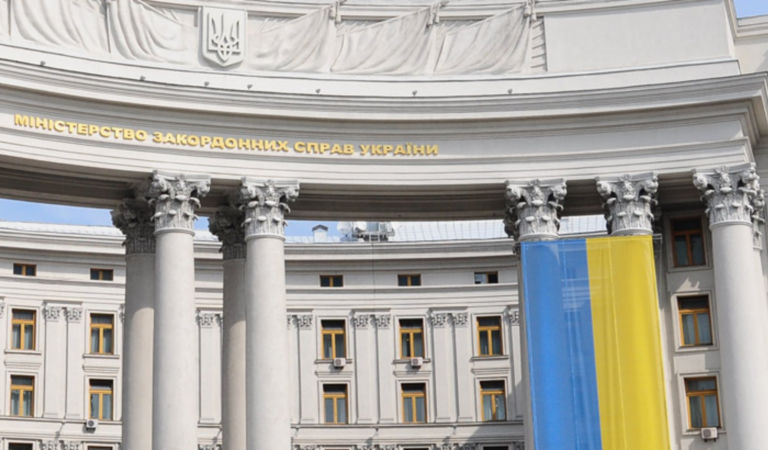AS THE TRAGEDY IN UKRAINE UNFOLDS, Western policymakers’ and investors’ long-standing assumptions about Europe’s geopolitical and economic order are being shattered one by one, with major implications for the EU and the euro area. So I see value in thinking through alternative scenarios of what this may mean for Western Europe and the euro area specifically. Below, I outline four potential pathways, but with the caveat that the sheer unpredictability of events makes it impossible to put credible probabilities on any of them.
A changed world
Whichever road we end up taking, there is no going back to where we were before the invasion. I think the world has now changed in the following ways:
- This is the start of another explicit Cold War. Economically, I think that accelerates the trend towards deglobalisation of energy as well as supply chains, which will inevitably mean higher costs.
- The euro area’s fiscal strategy has shifted. Whatever the eventual outcome, fiscal spending will be structurally higher. The question is simply one of degree.
- The Western sanctions policy toolkit now includes switching off Swift — a move initially resisted by the EU — and freezing central bank reserves. All countries will have registered that threat.
The question we need to answer is whether these three shifts are happening in an environment of demand destruction or not.
We should also beware false probabilities. The paths I describe below are not mutually exclusive. In fact, the realisation of one scenario may first require a sharp rise in the probability of the opposite path. For instance, the world may need to get close to the edge before any de-escalation is possible. That makes investing with any level of conviction incredibly difficult, as the signposts we may be looking for to get confidence could be misleading.
Four potential paths
1. Stalemate — My base case is that we are heading for a stalemate and a Cold War. This would involve Russia taking over Ukraine, but Ukrainians continuing to resist, funded and aided by the West. The sanctions would persist and harden further, with Russia seeking economic commitments from elsewhere. This would be an unstable equilibrium, with increased NATO presence in Europe and numerous opportunities for flare-ups.
The near-term economic implications for Western Europe would be much lower growth (-1%) and much higher inflation (+2%). Under that scenario, the European Central Bank (ECB) would slow, but not stop, the process of hiking interest rates later this year. However, stalemate would in my view entail a sharp acceleration towards a more fractured world — more explicit deglobalisation. That process would be funded by permanently higher fiscal deficits. This stalemate outcome could slow the exit of the ECB and other central banks from ultra-loose monetary policy and may raise nominal growth and inflation even further in the medium term. The key risk to that view is if the migration flows from Ukraine accelerate so much (10%+ of the population) that they meaningfully increase the euro area’s labour force, which could dampen wage growth. From a yield perspective, the long-term equilibrium interest rate may be unchanged or lower, but that fall should be offset by higher inflation expectations and higher risk premia.
The difficulty with this scenario is that it may take a long time for us to recognise that this is the most likely outcome. However, I think it has now become more difficult for either Russia or the West to back down. That increases the probability of a further, rapid escalation.
2. Energy rationing — One alternative path is that the next escalation occurs through energy rationing, resulting from either sanctions by the West or retaliatory measures from Russia. Depending on the degree of rationing, this alone could take anything from 3% to 6% off euro-area growth, with some potential blowback for financial stability as losses mount. Such a scenario would mean a recession, with even higher immediate inflation — My assumption is that governments would introduce fiscal price controls on energy to soften the blow for households and step up their shift to alternative sources of energy. Both would imply even bigger fiscal spending. We would move into a major risk-off environment, which would also extend to the euro. The ECB’s reaction function may be slower than in the past given heightened inflation, but I believe it would respond to the recession risks with a shift back to easing once unemployment starts to rise.
3. Hot war — Mentioning the risk of a “hot” war outside the Ukrainian border would have been met with raised eyebrows only a week ago. But it is now a path that can be sketched. Clearly, it remains unlikely, but the probability is irrelevant. Even the remote possibility is highly significant. The fact that the probability of a hot war may need to rise before we reach either de-escalation or stalemate makes it difficult for the market to engage with the potentially higher fiscal outcomes. In this scenario, central banks would be an arm of governments and would act accordingly.
4. Rapid de-escalation — Finally, the positive tail scenario is some form of rapid de-escalation. This would probably be an agreement where Ukraine is an independent state that is not part of the EU, NATO or the Russian bloc, but crucially where Russian troops are removed. That is a possible end game, but I don’t think it is likely near term. For that to happen soon may require a new regime in Russia or the world getting to the brink of war. However, if this positive outcome were to materialise, it would be a huge risk-on move for markets.
In that context, I would be even more positive on the euro-area cycle and structure. The fiscal announcements over the past few days would not be reversed, so it would mean extra demand into an already high-inflation outlook. The ECB would tighten more quickly, with potentially two interest-rates rises this year, and the peak in rates would be higher. But structurally, the euro area would look a lot stronger, with evidence of greater coordination, integration and burden sharing.









